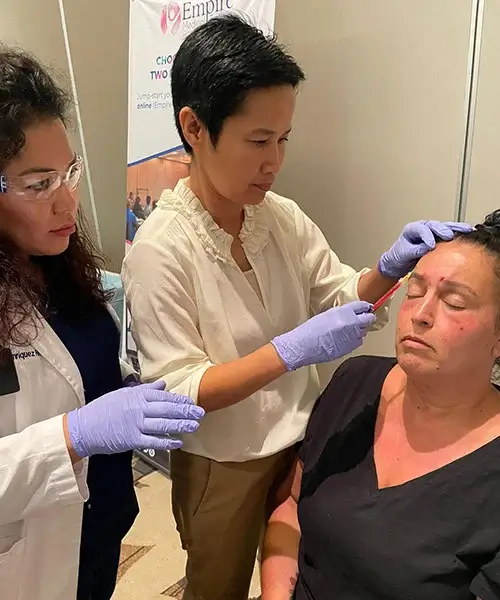The Role of PRP in Contemporary Lip Augmentation Practices
By Dr. Stephen Cosentino
PRESIDENT OF EMPIRE MEDICAL TRAINING
One of the most exciting recent developments in lip rejuvenation science is the advent of PRP (platelet rich plasma) injections specifically targeting the lip area.
Sometimes offered in conjunction with Botox® or dermal filler treatments and other times offered in isolation, PRP lip injection is minimally invasive and generally well tolerated by patients. Many patients and providers swear by the results, which may include temporary reduction of fine lines and wrinkles around the injection site and improved color and definition of the lips themselves.
Whether you’re a first-time lip augmentation patient or considering a new treatment approach, here’s what you should know about PRP lip injections.
PRP for Lips: Does It Work?
PRP lip treatments utilize the body’s own stem cells to stimulate collagen production and diminish fine lines in the lips and adjacent areas of the face. They produce visible, if temporary, results in many patients.
Benefits of PRP Treatment for Lips
The key benefits of PRP lip treatments include:
- Restoring lost color. Many patients report more vibrant color of the lips and contrast with the surrounding skin.
- Increasing collagen formation. PRP injection may stimulate collagen production in the lips, adding volume and structure. Collagen remains in the body for months to years, producing a durable improvement in appearance.
- Smoothing out wrinkles and imperfections. The added volume may help smooth out wrinkles, fine lines, and other imperfections on and around the lips. Many patients report reductions in smokers’ lines and other common lip-related cosmetic complaints.
- Improving lip symmetry. Targeted PRP injections can smooth out lip asymmetry, resulting in a more “even” smile and resting face.
How Long Results Last
PRP lip injection results last longer than botulinum toxin (Botox and alternatives) and hyaluronic acid filler injections. Actual time frames vary, but many patients report improvements for at least one year after treatment. Results last longer because unlike Botox and hyaluronic acid filler, PRP injections directly stimulate new collagen and cell production.
Possible Side Effects
The risk of side effects is quite low with PRP lip injections because the active ingredient comes from the patient themselves. There’s little chance of an allergic reaction, for example.
Side effects can result from improper injection technique and impurities in the PRP solution. These tend to be mild and temporary, but patients should watch for signs of infection and seek medical attention for symptoms like severe swelling, fever, and injection site discharge.
When PRP treatment is paired with other cosmetic injectables, such as Botox or dermal fillers, side effects are more likely to occur. For example, Botox side effects can include headache, throat irritation, and other mild flulike symptoms. More serious Botox side effects include droopy mouth and “frozen smile.”
To reduce your risk of adverse events, always work with a provider who has completed an accredited PRP training course and is certified to perform PRP treatments in your area.
Alternatives to PRP Lip Augmentation
If you’re not quite ready for PRP lip treatment, consider these alternatives first:
- Hyaluronic acid fillers (like Juvederm®)
- Calcium hydroxylapatite fillers (like Radiesse®)
- Noninvasive treatments (like over-the-counter makeup)
- Botulinum toxin injections (like Botox®, Dysport®, or Xeomin®)


